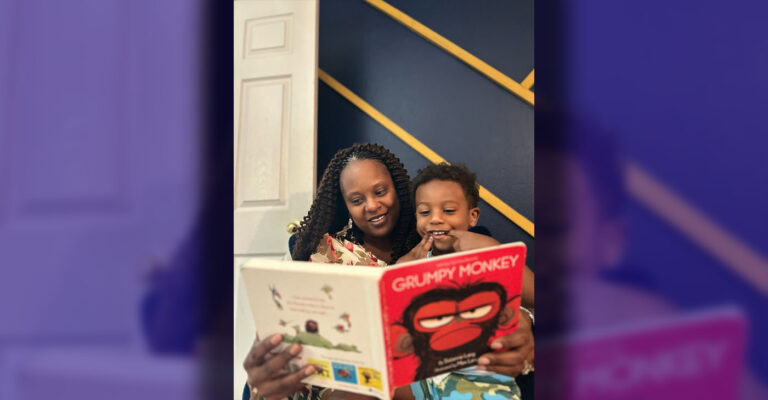By Niyoka McCoy
One of the joys of parenthood is the peaceful, soothing experience of reading a bedtime story to your child. Your comforting voice can help lull them into a sleepy state as you read aloud melodic nursery rhymes and other enchanting stories. To this day, I can remember some of these moments as my mom read my favorite stories aloud at bedtime. For babies, simply hearing words and language as you read to them is beneficial. And as children grow older, relatable themes and meaningful content in the books you read together lead to those deep, “what’s the meaning of life?” type of questions kids tend to ask as they draw close to slumber. So, as you pick books at the local library or from your home collection to read together, know that these are some of the wonderful benefits your child is experiencing each time you read to them:
Exposure to Words and Language
Did you know simply hearing words is crucial to your child’s language development? Research shows that it is the most important component in developing language pathways in a child’s brain, as it boosts their language and cognitive capacity, expanding their ability to make sense of and use words. In fact, a study from Ohio State University found that young children whose parents read to them at least one book a day will hear around 290,000 more words by age 5 than children who are not read to regularly. And children whose parents read five books each day will hear about 1.4 million more words than children who are never read to.
Boost in Cognitive Development
Reading helps prepare children for school by building a strong foundation of knowledge and a deeper understanding of the world around them. This foundation gives children important context for complex subjects, making it easier for them to grasp new concepts and make sense of their experiences as they grow.
Deepening of Relationships and Bonding Attachment
Simply reading together can help children build secure attachment, an important bond that plays a crucial role in brain development. Research shows that safe and secure communication, like reading together, helps create a foundation on which children will form relationships throughout their lives. It also helps build confidence and resiliency to stress, as well as the ability to manage emotions and maintain meaningful relationships. Plus, they will experience a wide range of positive feelings in the moment, like comfort, safety, attention, and love.
Development of Social-Emotional Skills
Studies show that there is a correlation between reading at a young age and the development of interpersonal and social-emotional skills, particularly empathy. And this is due to the feelings, experiences, and oftentimes, the heroic, kind, or bold actions of characters they read about in books. Think about “I Am Enough” by Grace Byers, which reminds children to be there for others in kindness and love. As Byers says, “To help each other when it’s tough, to say together: I am enough.” Then there’s “Thank You, Omu,” by Oge Mora, that tells a heartwarming story about sharing and generosity, inspired by the author’s childhood role models. Reading stories about relatable characters can also help children understand and manage their emotions. By seeing how characters cope with similar feelings, children can learn that it’s okay to feel sad, angry, or frustrated at times. They can also learn positive ways to deal with these emotions.
It’s good for us, too
Let’s face it—reading to our kids can be therapeutic for us as parents, too. One day, we’ll miss how excited they were to choose their bedtime story and insist we show them every picture. These small, meaningful moments do more than build language and literacy skills; they deepen your bond and offer your child a sense of comfort and connection. And just like I remember my mom’s voice reading to me, your child may one day remember yours. Reading together is a powerful way to nurture their development, spark a love for reading, and enjoy the time you spend together.
Niyoka McCoy is the Chief Learning Officer at K12. She leads the development and implementation of the company’s learning strategy, curriculum, and instruction, with an Ed.D. in Curriculum and Instruction and over 16 years of experience in the education sector.






